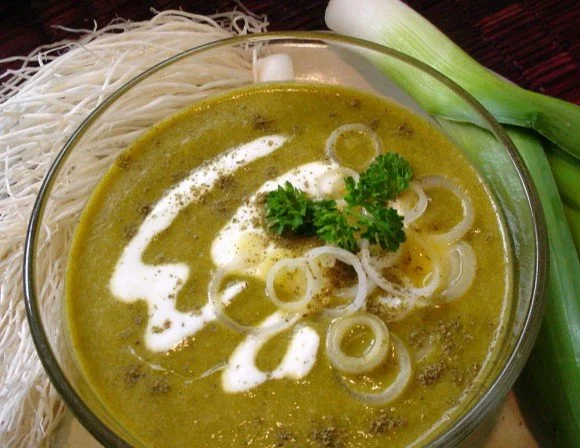Cooking with Ramps: A Culinary Journey Through Canada’s Wild Leek
Tasting a wild vegetable!
Each spring, culinary enthusiasts across Canada and North America eagerly await the fleeting arrival of ramps—wild leeks that are among the first edible plants to emerge after winter’s thaw. Their unique flavor, rich cultural history, and versatility in cooking have earned them a loyal following among chefs, foragers, and foodies alike.
What Are Ramps?
Ramps, also known as wild leeks or spring onions, are perennial wild onions native to eastern North America. They grow in rich, moist deciduous forests from as far away as South Carolina up through Quebec and Ontario. The plant features broad, smooth, green leaves with a purplish stem and a white bulb that resembles a scallion. Their season is incredibly short, typically only a few weeks from mid-April to early June, which contributes to their prized status.
In Latin, ramps are referred to as Allium tricoccum, placing them in the same genus as onions, garlic, and shallots. The species name “tricoccum” refers to the three-seeded fruits the plant produces.
Historical and Cultural Significance
Ramps have deep roots in Canadian history, particularly among Indigenous communities. For centuries, First Nations peoples harvested ramps for both culinary and medicinal purposes. Known for their detoxifying properties, ramps were consumed to cleanse the blood and ward off spring illnesses after a long winter diet lacking in fresh greens.
Early European settlers adopted the practice of harvesting ramps and quickly integrated them into their seasonal diets. In Quebec and other parts of eastern Canada, ramps (locally called ail des bois) became so popular that overharvesting led to legal restrictions on their collection. In Quebec, for instance, harvesting ramps for commercial purposes is now prohibited, and individuals are limited to picking no more than 50 bulbs per year for personal use.
The Flavor Profile of Ramps
Ramps boast a complex flavor that combines the pungency of garlic with the mild sweetness of leeks. The white bulb has a strong onion-garlic aroma, while the tender green leaves are milder and more herbaceous. This layered taste makes ramps a prized ingredient for both raw and cooked preparations.
Because of their assertive flavor, ramps should be used judiciously. A small amount can elevate a dish, while overuse may overpower more delicate ingredients.
How to Use Ramps in Cooking
Ramps are incredibly versatile in the kitchen. All parts of the plant—leaves, stems, and bulbs—are edible and useful in various preparations. They can be eaten raw, sautéed, grilled, pickled, or used to infuse oils and butters. Their short season makes preservation methods such as freezing or pickling especially popular.
Here are some of the best ways to incorporate ramps into your cooking:
Ramp Pesto – A vibrant, garlicky spread that substitutes ramps for basil, perfect on pasta, toast, or sandwiches.
Pickled Ramps – Preserved with vinegar and spices, pickled ramps add zing to charcuterie boards and salads.
Ramp Risotto – Finely chopped ramps stirred into creamy rice lend a rich depth of flavor.
Ramp Frittata – Sautéed ramps folded into eggs with cheese and herbs make for a bright, springtime brunch.
Ramp Butter – Blended with softened butter and salt, ramp butter can be spread on bread or used to flavor vegetables and meats.
Grilled Ramps – Whole ramps brushed with olive oil and grilled are a simple and flavorful side dish.
Cream of Ramps Soup - Leaves and bulbs chopped and blended with cream and a few additional spices…how much simpler can it get?!
Ramps in Global Cuisines
While ramps are native to North America, similar wild alliums are found around the world and used in various culinary traditions. In Korea, a similar wild garlic is used in kimchi and stews. In Eastern Europe, wild garlic (Allium ursinum) is blended into soups, spreads, and dumplings. The global use of wild leeks speaks to their versatility and cultural significance.
As global cuisines become more interconnected, chefs in Canada have begun incorporating ramps into Asian-inspired dishes, such as ramen topped with grilled ramps or dumplings stuffed with ramp and pork mixtures. Likewise, in Italian and French-Canadian cooking, ramps substitute for shallots or leeks in sauces and soups, adding a seasonal twist.





